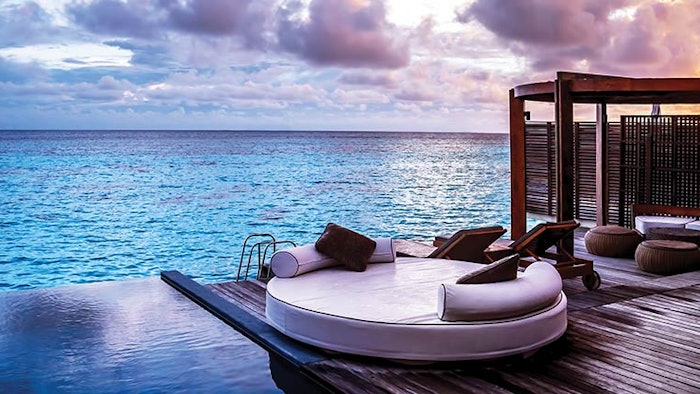
The concept of wellness has been documented back to ancient Egyptians, who are noted to have used herbal medicines, energy healing, reflexology and massage to create a sense of balance. Fast forward a few centuries, and the concept of wellness continued with the Romans and Greeks, who utilized bathhouses, saunas and hot springs as established practices. In fact, all of this is the basis for the wellness in the US today.
The definition of wellness has also evolved. The World Health Organization (WHO) has defined it since the 1940s as, “A state of complete physical, mental and social well-being.” This goes beyond just being free of illness, and emphasizes the proactive maintenance and improvement of health and well-being—the standard when it comes to delivering wellness services. The Global Wellness Institute (GWI) recently clarified the scope of wellness as, “The active pursuit of activities, choices and lifestyles that lead to a state of holistic health.”
So, who are wellness consumers? A 2020 article in Tourism Research outlined the various aspects of wellness consumers: 80% are women, almost 50% of whom are married, have a college degree and have disposable income.1 These consumers are educated and savvy, and most are on the lookout for ways to de-stress and create a sense of normalcy in a chaotic time. In addition, the age and income increased (baby boomers and generation X) for those visiting wellness destinations versus day spa locations (millennials and generation Z).1
Wellness Tourism
Wellness tourism is travel to sustain or increase a holistic lifestyle. Until recently, wellness tourism was initially combined with medical and health tourism. In both categories, people travel to a distant location for a medical procedure or treatment unavailable or too expensive in their home country.
Unlike health and medical travel, wellness tourism is sought by those who already have a relatively healthy lifestyle. These tourists are seeking to enhance and expand upon their current well-being practices and can be categorized into two groups: primary and secondary tourists. Primary wellness consumers are traveling exclusively for a wellness experience. Secondary wellness consumers are traveling for other reasons and plan to incorporate wellness into the trip. Many travelers (business or leisure) can be converted into wellness tourists when a property has comprehensive wellness offerings.
Thus, wellness tourism is at the forefront of most hotel and destination spas; rightfully so, as wellness tourists spend 178% more than traditional business or leisure travelers, according to the GWI. As such, understanding the motivation of these consumers probably keeps most marketing and spa directors awake at night, determining what is needed to get them in and spending.
Consumers’ Motivation
As of the writing of this article, the GWI projects that wellness tourism will generate $919 billion in revenue by 2022, but what is the driving force behind consumers’ choices in this regard? The notion of consumer motivation is a very personal one and continues to be explored.
Their income, profession and area in which they live plays into the decision, along with family dynamics and stress levels. The options most sought after are those able to balance the physical, mental and spiritual connection; these contribute highly to the destination selection process. Wellness tourists want to have customized experiences that add to or enhance their regular practices.
Currently, nature experiences top the list of requests for those seeking wellness destinations. Practices like forest bathing, hiking and walking trails, cooking, yoga and meditation in an outdoor environment all make a location very desirable to these guests, who are also factoring in the ability to reduce stress and reset.
Attracting These Guests
The first step is to develop a menu of robust wellness offerings that includes fitness, nutritional, physical, mental, emotional and spiritual components. The inclusion of nature and community-focused activities, as well as a self-designed element, are also critical aspects of today’s most successful menus.
In addition, the training and preparation of staff and service providers are an integral part of menu development. It’s also smart to develop partnerships with visiting celebrity instructors for yoga and meditation classes, renowned chefs for culinary offerings, and other wellness organizations that are a fit—all of which add to the exposure and good reputation of the brands. Such unique offerings will factor into the decision-making process, and it all creates a seamless experience that wellness tourists expect today.
Once the menu and collaborations are in place, it’s time to market the various options and services, as well as the location itself to potential guests. A well-developed strategy that aims to reach various cultural and social demographics allows for a more diverse and inclusive appeal to a broader scope of wellness consumers. The strategic partnerships also enhance the reach of marketing campaigns.
As one of the fastest-growing sectors, wellness tourism continues to expand and evolve. Destinations will still have to adjust and plan for ways to attract wellness tourists and their dollars. Essentially, they are looking for a experiences that can be customized and include community combined with outdoor adventures. A diversity and inclusion strategy for both consumers and offerings allows organizations to tap into today’s wellness consumers, who appreciate a sense of belonging for all. As wellness tourists are growing in number daily, the goal is to meet and exceed their expectations. I recently heard a great quote that’s appropriate for this situation: “There is no before, only forward.”
References:
- Suttikun, C., & Yuan, J. (2020). A model of marketing strategies and pull motivations influencing young consumers to visit day spas. e-Review of Tourism Research, 17(6), 865-899.
Sherrie Tennessee has more than 20 years of experience as a recognized educator, consultant and wellness “mixologist.” Under her SpaSOS brand, she has designed and facilitated training programs for properties including Sandals Resorts International-Red Lane Spas and Mandarin Oriental. Tennessee has an MBA in marketing and entrepreneurship, and is currently a PhD student and instructor at William F. Harrah College of Hospitality, University of Nevada, Las Vegas.











